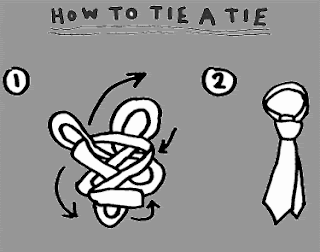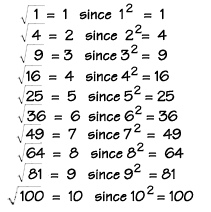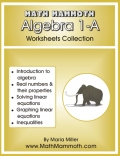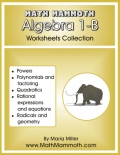| 7th Grade Annual Curriculum Plan with Activities |
|
|
| |
|
| Day of Instruction | Performance Indicator | Description | Technology Oriented Activity |
| | | |
| 1 | 7.N.1 | Distinguish between the various subsets of real numbers (counting/natural numbers, whole numbers, integers, rational numbers, and irrational numbers) | Comparing Numbers
http://321know.com/g7_41gx1.htm |
| 2 | 
| Recognize the difference between rational and irrational numbers (e.g., explore different approximations of) | Number Practice Game
http://www.softschools.com/quiz_time/math/arithmetic/theme2.html |
| 3 | 7.N.3 | Place rational and irrational numbers (approximations) on a number line and justify the placement of the | Placing numbers on a number line
http://www.mathsframe.co.uk/placenumbers.swf |
| 4 | 7.N.17 | Classify irrational numbers as non-repeating/non-terminating decimals | Irrational numbers
http://en.wikipedia.org/wiki/Irrational_number |
| 5 | 7.S.1 | Identify and collect data using a variety of methods | Qualitative data collection
http://people.uwec.edu/piercech/ResearchMethods/Data%20collection%20methods/DATA%20COLLECTION%20METHODS.htm |
| 6 | 7.S.1 | Identify and collect data using a variety of methods | Primary data collection methods
http://brent.tvu.ac.uk/dissguide/hm1u3/hm1u3text3.htm |
| 7 | 7.S.1 | Identify and collect data using a variety of methods | |
| 8 | 7.S.4 | Calculate the range for a given set of data | Statistical Range for a set
http://321know.com/g7_518x3.htm |
| 9 | 7.S.5 | Select the appropriate measure of central tendency | Basic statistical mean
http://321know.com/sta418x5.htm |
| 10 | 7.N.13 | Add and subtract two integers (with and without the use of a number line) | Integer lesson
http://www.mathgoodies.com/lessons/vol5/intro_integers.html |
| 11 | 7.N.13 | Add and subtract two integers (with and without the use of a number line) | Integers Quiz
http://www.softschools.com/quiz_time/math/arithmetic/theme2.html |
| 12 | 7.N.13 | Add and subtract two integers (with and without the use of a number line) | Subtracting Number ball game
http://www.sheppardsoftware.com/mathgames/Numberballs_subtraction/numberballsSubtraction.htm |
| 13 | 7.N.12 | Add, subtract, multiply, and divide integers | Adding integers
http://www.mathgoodies.com/lessons/vol5/addition.html |
| 14 | 7.N.12 | Add, subtract, multiply, and divide integers | Subtracting integers
http://www.mathgoodies.com/lessons/vol5/subtraction.html |
| 15 | 7.N.12 | Add, subtract, multiply, and divide integers | Multiplying integers
http://321know.com/g7_310mx.htm |
| 16 | 7.N.12 | Add, subtract, multiply, and divide integers | Dividing integers
http://321know.com/g7_55_di.htm |
| 17 | 7.N.12 | Add, subtract, multiply, and divide integers | Math Mah Jong game
http://www.sheppardsoftware.com/mathgames/mahjongMath.html |
| 18 | | TEST |
|
| 19 | 7.N.8 | Find the common factors and greatest common factor of two or more numbers | Factorize game
http://www.shodor.org/interactivate/activities/FactorizeTwo/ |
| 20 | 7.N.9 | Determine multiples and least common multiple of two or more numbers | Least common multiple calculator
http://wims.unice.fr/wims/wims.cgi?module=tool/popup.en&search=lcm |
| 21 | 7.N.10 | Determine the prime factorization of a given number and write in exponential form | Factorization in exponential form
http://www.eduplace.com/math/mathsteps/5/b/index.html |
| 22 | 7.N.11 | Simplify expressions using order of operations (Note: Expressions may include absolute value and/or integral exponents greater than 0.) | Order of Operations game
http://www.shodor.org/interactivate/activities/OrderOfOperationsFou/
Calculating using order of operations
http://321know.com/pro73cx0.htm |
| 23 | 7.N.14 | Develop a conceptual understanding of negative and zero exponents with a base of ten and relate to fractions and decimals (e.g., 10-2 = .01 = 1/100) | Evaluating exponents of negaive numbers
http://321know.com/exp-int-eval-exp.htm |
| 24 | 7.A.2 | Add and subtract monomials with exponents of one | Evaluating exponents
http://321know.com/exp-eval-exp.htm |
| 25 | 7.A.2 | Add and subtract monomials with exponents of one | Arithemetic Four game
http://www.shodor.org/interactivate/activities/ArithmeticFour/ |
| 26 | 7.A.2 | Add and subtract monomials with exponents of one | Math game
http://www.sheppardsoftware.com/mathgames/arithmetic/arithmetic.htm |
| 27 | 7.N.4 | Develop the laws of exponents for multiplication and division | Exponent Quiz Game
http://www.softschools.com/quiz_time/math/exponents/theme6.html |
| 28 | 7.N.4 | Develop the laws of exponents for multiplication and division | Multiplication game
http://www.softschools.com/quiz_time/math/properties/theme50.html |
| 29 | 7.N.4 | Develop the laws of exponents for multiplication and division | |
| 30 | 7.N.15 | Recognize and state the value of the square root of a perfect square (up to 225) | Square root video
http://www.mathplayground.com/mv_square_root.html |
| 31 | 7.N.16 | Determine the square root of non-perfect squares using a calculator | Square root game
http://www.softschools.com/math/games/squareroot_practice.jsp |
| 32 | 7.N.18 | Identify the two consecutive whole numbers between which the square root of a non-perfect square whole number less than 225 lies (with and without the use of a number line) | |
| 33 | 7.N.5 | Write numbers in scientific notation | Scientific notation calculator
http://www.calculatorsoup.com/calculators/math/scientificnotation.php |
| 34 | 7.N.6 | Translate numbers from scientific notation into standard form | Converting from scientific notation
http://321know.com/nam-g6_71gx1.htm |
| 35 | 7.N.7 | Compare numbers written in scientific notation | Converting to scientific notation
http://321know.com/nam-g6_71fx1.htm |
| 36 | 7.A.1 | Translate two-step verbal expressions into algebraic expressions | Algebra Quiz
http://www.softschools.com/math/games/algebra_practice.jsp |
| 37 | 7.A.1 | Translate two-step verbal expressions into algebraic expressions | Two variable expressions
http://321know.com/equ723x3.htm |
| 38 | 7.A.1 | Translate two-step verbal expressions into algebraic expressions | Algebra Number Ball Game
http://www.sheppardsoftware.com/mathgames/Numberballs_algebra_I/numberballsAlgebraI.htm |
| 39 | 7.A.1 | Translate two-step verbal expressions into algebraic expressions | |
| 40 | | TEST | |
| 41 | 7.A.3 | Identify a polynomial as an algebraic expression containing one or more terms | Algebra II ball game
http://www.sheppardsoftware.com/mathgames/Numberballs_algebra_II/numberballsAlgebraII.htm |
| 42 | 7.A.3 | Identify a polynomial as an algebraic expression containing one or more terms | |
| 43 | 7.A.4 | Solve multi-step equations by combining like terms, using the distributive property, or moving variables to one side of the equation | Make 24 game
http://www.sheppardsoftware.com/mathgames/make24/make24.htm |
| 44 | 7.A.4 | Solve multi-step equations by combining like terms, using the distributive property, or moving variables to one side of the equation | Expressions with two variables
http://321know.com/equ723x3.htm |
| 45 | 7.A.4 | Solve multi-step equations by combining like terms, using the distributive property, or moving variables to one side of the equation | |
| 46 | 7.A.4 | Solve multi-step equations by combining like terms, using the distributive property, or moving variables to one side of the equation | |
| 47 | 7.A.4 | Solve multi-step equations by combining like terms, using the distributive property, or moving variables to one side of the equation | |
| 48 | 7.A.7 | Draw the graphic representation of a pattern from an equation or from a table of data | Pattern game
http://www.shodor.org/interactivate/activities/PatternGenerator/ |
| 49 | 7.A.7 | Draw the graphic representation of a pattern from an equation or from a table of data | Pascals triangle game
http://www.shodor.org/interactivate/activities/ColoringMultiples/ |
| 50 | 7.A.7 | Draw the graphic representation of a pattern from an equation or from a table of data | |
| 51 | 7.A.7 | Draw the graphic representation of a pattern from an equation or from a table of data | |
| 52 | 7.S.6 | Read and interpret data represented graphically (pictograph, bar graph, histogram, line graph, double line/bar graphs or circle graph) | Graphing activity
http://www.shodor.org/interactivate/activities/Sequencer/ |
| 53 | 7.S.6 | Read and interpret data represented graphically (pictograph, bar graph, histogram, line graph, double line/bar graphs or circle graph) | Bar Graph tool
http://www.shodor.org/interactivate/activities/BarGraph/ |
| 54 | | TEST | |
| 55 | 7.A.8 | Create algebraic patterns using charts/tables, graphs, equations, and expressions | |
| 56 | 7.A.8 | Create algebraic patterns using charts/tables, graphs, equations, and expressions | |
| 57 | 7.A.8 | Create algebraic patterns using charts/tables, graphs, equations, and expressions | |
| 58 | 7.A.8 | Create algebraic patterns using charts/tables, graphs, equations, and expressions | |
| 59 | 7.A.10 | Write an equation to represent a function from a table of values | Two variable function pump game
http://www.shodor.org/interactivate/activities/TwoVariableFunction/ |
| 60 | 7.A.10 | Write an equation to represent a function from a table of values | Data flyer game
http://www.shodor.org/interactivate/activities/DataFlyer/ |
| 61 | 7.A.10 | Write an equation to represent a function from a table of values | |
| 62 | 7.G.10 | Graph the solution set of an inequality (positive coefficients only) on a number line (See 7.A.5) | Solving Inequality video
http://www.mathplayground.com/howto_InequalitiesA.html |
| 63 | 7.G.10 | Graph the solution set of an inequality (positive coefficients only) on a number line (See 7.A.5) | |
| 64 | 7.G.10 | Graph the solution set of an inequality (positive coefficients only) on a number line (See 7.A.5) | |
| 65 | 7.M.4 | Draw central angles in a given circle using a protractor (circle graphs) | Circle crossword puzzle
http://www.mathgoodies.com/puzzles/crosswords/icircle2.html |
| 66 | 7.M.4 | Draw central angles in a given circle using a protractor (circle graphs) | Protractor video
http://www.mathplayground.com/mv_using_protractor.html |
| 67 | 7.M.4 | Draw central angles in a given circle using a protractor (circle graphs) | Circle graph tool
http://www.shodor.org/interactivate/activities/CircleGraph/ |
| 68 | 7.A.5 | Solve one-step inequalities (positive coefficients only) (See 7.G.10) | Soving inequalities
http://321know.com/equ725x7.htm |
| 69 | 7.A.5 | Solve one-step inequalities (positive coefficients only) (See 7.G.10) | |
| 70 | 7.A.5 | TEST | |
| 71 | 7.G.10 | Graph the solution set of an inequality (positive coefficients only) on a number line (See 7.A.5) | Graphing linear inequalities
http://www.purplemath.com/modules/syslneq.htm |
| 72 | 7.G.10 | Graph the solution set of an inequality (positive coefficients only) on a number line (See 7.A.5) | |
| 73 | 7.G.10 | Graph the solution set of an inequality (positive coefficients only) on a number line (See 7.A.5) | |
| 74 | 7.S.2 | Display data in a circle graph | Interactive circle word search
http://www.mathgoodies.com/puzzles/wordsearch/icircle_ws.html |
| 75 | 7.S.2 | Display data in a circle graph | Circumference video
http://www.mathplayground.com/mv_circumference.html |
| 76 | 7.S.2 | Display data in a circle graph | Circle graph tool
http://www.shodor.org/interactivate/activities/CircleGraph/ |
| 77 | 7.S.3 | Convert raw data into double bar graphs and double line graphs | Bar Graph tool
http://www.shodor.org/interactivate/activities/BarGraph/ |
| 78 | 7.S.3 | Convert raw data into double bar graphs and double line graphs | Multi bar graph tool
http://www.shodor.org/interactivate/activities/MultiBarGraph/ |
| 79 | 7.S.3 | Convert raw data into double bar graphs and double line graphs |
|
| 80 | 7.G.1 | Calculate the radius or diameter, given the circumference or area of a circle | Area of Circle video
http://www.mathplayground.com/mv_area_circles.html |
| 81 | 7.G.1 | Calculate the radius or diameter, given the circumference or area of a circle | Circumference of a circle
http://321know.com/g7_612x7.htm |
| 82 | | TEST | |
| 83 | 7.G.2 | Calculate the volume of prisms and cylinders, using a given formula and a calculator | Volume of prism video
http://www.mathplayground.com/mv_volume_prisms.html |
| 84 | 7.G.2 | Calculate the volume of prisms and cylinders, using a given formula and a calculator | Polygon Video
http://www.thefutureschannel.com/dockets/hands-on_math/inventing_with_polygons/index.php |
| 85 | 7.G.2 | Calculate the volume of prisms and cylinders, using a given formula and a calculator | Volume of a cylinder
http://321know.com/exp79_x5.htm |
| 86 | 7.G.2 | Calculate the volume of prisms and cylinders, using a given formula and a calculator | Volume rectangular prism
http://321know.com/g79_vox6.htm |
| 87 | 7.M.2 | Convert capacities and volumes within a given system | Volume triangular prism
http://321know.com/g79_vox1.htm |
| 88 | 7.M.2 | Convert capacities and volumes within a given system | Volume sphere
http://321know.com/g79_vox7.htm |
| 89 | 7.M.2 | Convert capacities and volumes within a given system | Volume pyramid
http://321know.com/g79_vox5.htm |
| 90 | 7.G.3 | Identify the two-dimensional shapes that make up the faces and bases of three-dimensional shapes (prisms, cylinders, cones, and pyramids) | Interactive crossword puzzle - easy
http://www.mathgoodies.com/puzzles/crosswords/icircle1.html |
| 91 | 7.G.3 | Identify the two-dimensional shapes that make up the faces and bases of three-dimensional shapes (prisms, cylinders, cones, and pyramids) | Shape inlay game
http://www.mathplayground.com/shape_inlay.html |
| 92 | 7.G.3 | Identify the two-dimensional shapes that make up the faces and bases of three-dimensional shapes (prisms, cylinders, cones, and pyramids) | Volume of cones
http://www.mathplayground.com/mv_volume_cones.html |
| 93 | 7.G.3 | Identify the two-dimensional shapes that make up the faces and bases of three-dimensional shapes (prisms, cylinders, cones, and pyramids) | Shape Explorer game
http://www.shodor.org/interactivate/activities/ShapeExplorer/ |
| 94 | 7.A.6 | Evaluate formulas for given input values (surface area, rate, and density problems) | Surface area of a cube
http://321know.com/exp79_x2.htm#section2 |
| 95 | 7.A.6 | Evaluate formulas for given input values (surface area, rate, and density problems) | Density solver
http://www.sartep.com/chem/chartsandtools/densitysolver.cfm |
| 96 | 7.A.6 | Evaluate formulas for given input values (surface area, rate, and density problems) | Surface are of a prism
http://321know.com/g79_sux3.htm |
| 97 | 7.G.4 | Determine the surface area of prisms and cylinders, using a calculator and a variety of methods | surface area of cylinder
http://321know.com/g79_sux2.htm |
| 98 | 7.G.4 | Determine the surface area of prisms and cylinders, using a calculator and a variety of methods | Surface Area game
http://www.shodor.org/interactivate/activities/SurfaceAreaAndVolume/ |
| 99 | 7.G.4 | Determine the surface area of prisms and cylinders, using a calculator and a variety of methods | Surface area calulator - online
http://www.csgnetwork.com/surfareacalc.html |
| 100 | 7.G.4 | Determine the surface area of prisms and cylinders, using a calculator and a variety of methods | |
| 101 | 7.M.11 | Estimate surface area | Estimator quiz
http://www.shodor.org/interactivate/activities/EstimatorQuiz/ |
| 102 |
|











